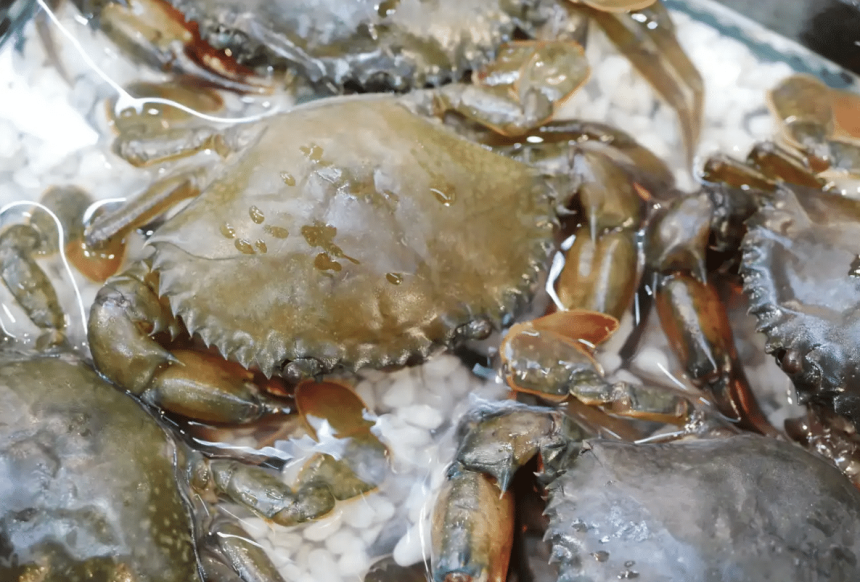One of the most frequent questions I am asked in interviews is, “What is your favorite ingredient?”
That’s a broad and subjective question, but it’s low-hanging fruit for an interviewer when speaking to someone in the food business. My answer typically varies depending on the season, my mood, what genre of the food world I am exploring at that moment, and a dozen other factors that might come into play.
Nevertheless, the ingredient I cite most often is crabmeat.
I love crab meat, and the blue crab that comes from the Gulf of Mexico, just 65 miles south of my hometown is the ingredient that makes its way into many of my favorite creations. It is rich, mild, delicate, sweet, and buttery. It’s a very healthy protein with a low salt content. Jumbo lump crab is the best of the bunch, though we use regular lump, special white, claw meat, and claw fingers at our restaurants.
Blue crab is plentiful in the warm Gulf waters. So much so that for a large portion of the year (mainly the colder months), Gulf Coast seafood suppliers are shipping crabmeat up to Maryland and the Mid-Atlantic region. Though we do hit spells where availability is limited down here.
One place where crabmeat is plentiful these days is a place where that particular species couldn’t even be found a few years ago— Italy. That country has been experiencing an “invasion” of blue crabs over the past year or so.
It’s a problem. A big problem.
Blue crabs have taken over certain areas of the northern Italian coastline, especially in the Po Delta. Though the Tuscan coast is experiencing the same invasion. “Invasion of crabs” seems like a term that would be used in a cheesy 1950s B-movie science fiction flick, but it’s happening.
One might think, “In the world of problems, having an overabundance of blue crabs in your waters seems more like a blessing than a problem.” I would love to have an invasion of blue crabs in the Gulf of Mexico. The problem on the northern Italian coast is that the blue crab has no predators. In our waters, sharks and rays thrive on blue crab which keeps the ecosystem balanced. Sharks and rays don’t exist on the northern coastline of Italy.
The bigger problem is that blue crabs thrive on clams and squid. Italian citizens also thrive on clams and squid. Currently, there’s an area in Italy where blue crabs have wiped out 90% of the young clam harvest. The Italian government is trying to solve the dilemma on two fronts. They’re giving a small amount of governmental assistance to all the family farmers and seafood harvesters in the affected areas. However, from the reports I have read, it’s not near enough to cover the damage done to families in the seafood trade. The government has also mounted a media campaign teaching Italians how to cook and eat blue crab.
When I heard this news my first thought was— how did the blue crab make its way to the Italian coastline? It appears that international shipping is to blame. Cargo ships when filling their ballasts with water take in blue crab. When the ballasts are emptied in Italian ports the water is not always filtered.
The Italians are now dealing with the saltwater version of kudzu.
One blue crab can lay up to eight million eggs at a time. It can also have up to seven broods in one year. All one must do is a little fourth-grade math to figure out that the problem is going to get exponentially worse without a natural predator. The only solution appears to be that the Italians are going to have to develop their taste and appreciation for blue crab. As tasks go, it’s not a tough one if you know what you’re doing. I could take on that problem in a heartbeat.
After Hurricane Katrina I was told that Louisiana sent a delegation to Holland to learn how they have spent centuries holding back the North Sea from flooding their country — a large portion of which is below sea level. They do it brilliantly and have done it for years. It may be time that we send a contingent of Mississippi Gulf Coast chefs, New Orleans chefs, and anyone above the age of 12 who owns a stove in Houma, Louisiana to Italy to show them the glory of blue crab cooking and how many ways it can be served at the dinner table.
There’s one huge problem though — Italians never mix dairy and seafood. Americans do this often. People in the South do it almost exclusively. Crabmeat au gratin would be seen as an abomination in Italy. But there are plenty of dishes in which crabmeat could be sauteed in olive oil and garlic and then flashed with a little white wine to top a nice grilled sea bass. There are several pastas we have served over the last three-plus decades that have used crabmeat as the main ingredient. Angel hair pasta works best, but we typically use a butter sauce such as beurre blanc to bring out the richness of the protein.
I have faith. Italian chefs are some of the most talented and creative cooks in the world. They will figure it out. I head over there in October to work for six weeks. I may give a few of my friends a few pointers. After all, jumbo lump crabmeat is selling for $5.00 a pound over there. To put that in perspective my price last week on jumbo lump crabmeat— wholesale mind you— was $28.50.
Tomatoes came to Italy from the Americas, and so did corn. They’ve figured out how to use those items better than most. I have faith that crabmeat will be the same.
Onward.
West Indies Crab Salad
- 2 pounds Jumbo Lump Crab
- 1 1/2 cup Yellow Onion, small dice
- 1/2 cup Canola, cottonseed or peanut oil
- 1/2 cup Champagne vinegar
- 1/4 cup ice water
- 2 Tbl fresh parsley, chopped
- 1 Tbl kosher salt
- 1/2 tsp freshly ground black pepper
Gently fold all ingredients together and cover tightly. Refrigerate overnight before serving. Just before serving, toss the salad well to redistribute the dressing.
French Bread Croutons
Preheat oven to 400 degrees
- 2 French Baguettes, sliced into 1 inch thick rounds
- 2/3 cups light olive oil
- 3 garlic cloves, peeled
- 1/2 Tbl kosher salt
Arrange the sliced bread on one large baking sheet. Use a pastry brush to brush each slice of bread with the olive oil. Bake for 4-5 minutes. Remove the bread from the oven and quickly rub each slice with the raw garlic. Sprinkle with the kosher salt and serve.
Yield: 6-8 servings
The views expressed by contributors are their own and not the views of SuperTalk Mississippi Media.








